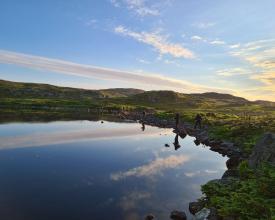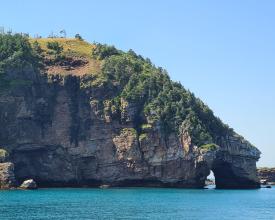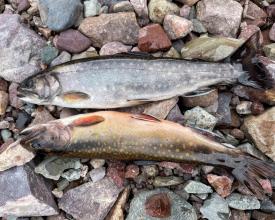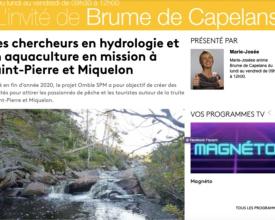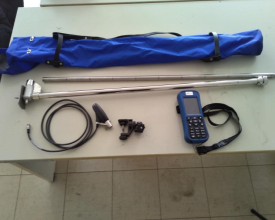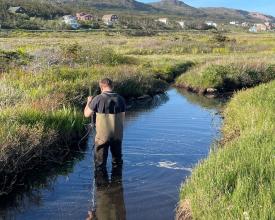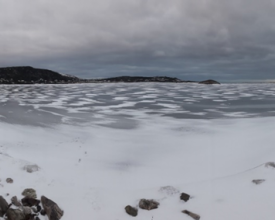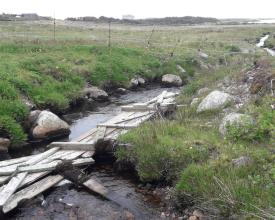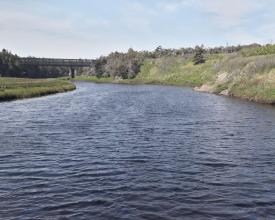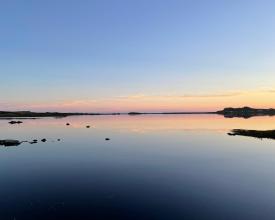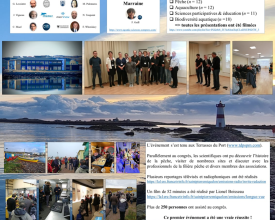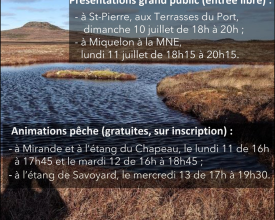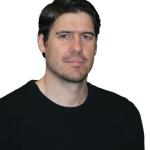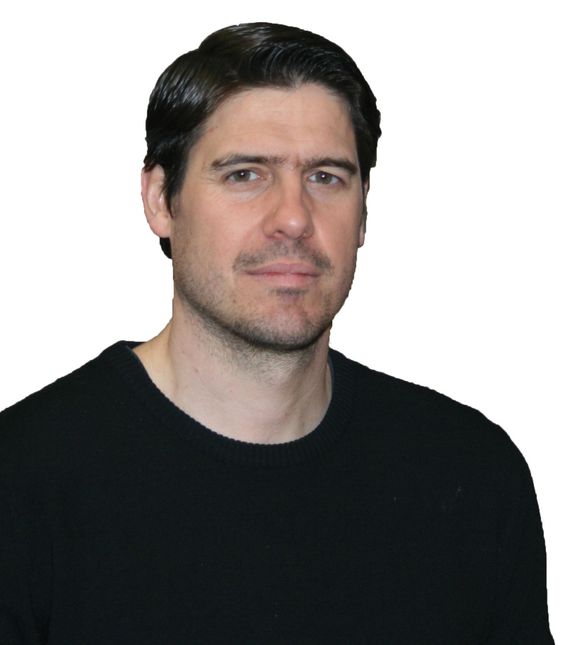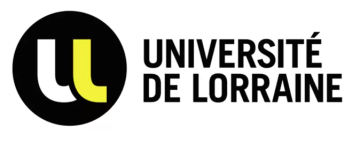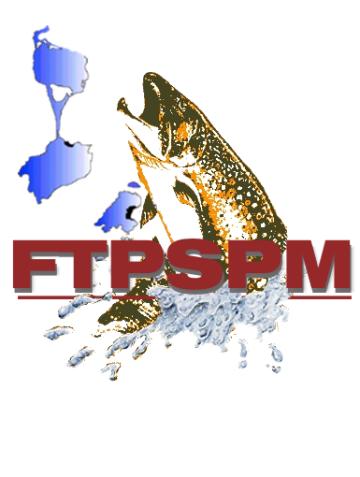
Characterization of brook trout habitats in Saint-Pierre and Miquelon
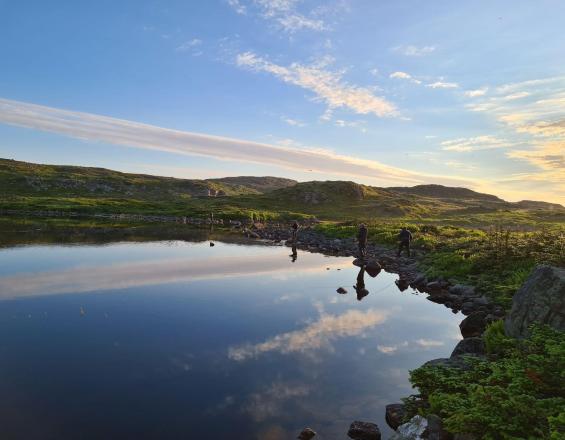
Saint-Pierre & Miquelon is the only French territory located in North America, some 20 km south of the Canadian province of Newfoundland-Labrador. The brook trout is the emblematic species of the archipelago's fresh waters, both in terms of heritage and sport fishing (nearly 10% of the local population fish for this species). The aim of this project is to characterize the ecological status of three of the main rivers and three of the main ponds where this species is present. We analyzed water quality (pH, dissolved oxygen, temperature), determined depths for the three ponds and characterized the physical state of the rivers, including their banks. These data, which are the first ever obtained for most of the rivers and ponds targeted in the project, will be essential for a better understanding of the evolution of char populations on the archipelago, and for proposing restoration actions where appropriate.
Context
Challenges addressed
There is no monitoring of water quality on the archipelago. This project made it possible to initiate monitoring of the main rivers and water bodies of Saint-Pierre et Miquelon, which required recruiting specialized students (masters in geography) and sending them on site, as well as acquiring specific equipment. This first step was essential to better understand the evolution of water quality, particularly in relation to climate change, and its potential impact on biodiversity, particularly brook trout. This project has enabled all local players and outside experts to discuss the management and conservation of hydrosystems and the actions to be taken in the future to improve their ecological quality. The long-term aim is to set up long-term monitoring of the archipelago's hydrosystems and propose appropriate actions to encourage the natural recovery of brook trout populations and develop sustainable fishing activities.
Location
Process
Summary of the process
The four blocks are complementary. It is crucial to involve all stakeholders from the outset of the project (block 1); to draw up an inventory of the equipment needed, whether already available or to be purchased, taking into account transport costs and lead times (block 2); to plan field activities in line with local constraints (block 3), and to communicate regularly through various networks and media to keep people informed of the project's progress (block 4).
Building Blocks
An original, complementary and motivated consortium
From the outset, the aim was to set up a consortium that would bring together all the local stakeholders involved in nature management on the archipelago, as well as French metropolitan colleagues with expertise in a number of complementary fields: geography, fish biology. Given that only one technician is employed by the fishing federation (all other members are volunteers) and that the project's scientific leader does not live on site, it was crucial to recruit someone who would be responsible for running the project on site. This person was key throughout the project. In addition, we recruited a Master's student to support the CDD in the second year of the project.
Enabling factors
- Recruitment of a one-year fixed-term contract for the project, who worked locally.
- Frequent exchanges between those involved locally and the scientific manager in mainland France.
- Strong logistical support and involvement of FTP SPM throughout the project.
- Student recruited for the project.
- Excellent interaction between the local project leader and the scientific project leader in mainland France.
- Rapid response from local stakeholders.
Lesson learned
It is essential to form a complementary consortium from the outset, including people who are motivated by the project. Working on islands requires a high degree of adaptability and reactivity to carry out the various field operations, particularly on Saint-Pierre and Miquelon, where climatic conditions can change rapidly.
Logistics and materials
Before responding to the call for projects, it is very important to draw up a list of the equipment available within the structure, and to check that it is in good working order. Then, a list of additional equipment needed to carry out the various activities must be discussed with the relevant people in the project. It is important to check whether the new equipment is available locally or externally, and in the latter case to take into account delivery times (sometimes several weeks or months) and additional costs. Next, it's very important to plan field activities according to weather conditions, and above all to adapt schedules very quickly.
Enabling factors
- Many items of equipment were already present and operational
- New equipment had been purchased for other projects
- Sufficient cash flow to be able to advance the cost of some equipment
- logistical help from a number of local volunteers
Lesson learned
As anticipated, it is not possible to carry out field work on the Saint-Pierre and Miquelon archipelago for several months (frozen ponds, for example). Consequently, it is essential to plan outdoor activities taking into account this major constraint, and to adapt the entire project accordingly. Once fieldwork is possible (6-7 months a year), you need to be ready and hyper-reactive to obtain the maximum amount of data.
Field work and analysis of results
The aim was to obtain as much data as possible on the water quality of three of the archipelago's main rivers and three main ponds. Thanks to the multiparameter probes already in use at the federation, we were able to take initial measurements of water quality, including temperature, dissolved oxygen and conductimetry (quantity of dissolved salts), which are fundamental to fish survival. At the same time, we determined bathymetry for all or part of the three ponds targeted by the projects. Finally, we applied a method to characterize the physical state of the watercourses, including the banks. All these data were then analyzed for the project. At the same time, a great deal of mapping work was carried out during the winter months (due to the impossibility of carrying out field work).
Enabling factors
- Very strong involvement of the person recruited on fixed-term contract, particularly for mapping hydrosystems.
- Numerous materials and equipment made available.
- Purchase of equipment needed to acquire new data.
- The size of the archipelago means that many measurements can be taken every day.
Lesson learned
Given the size of the archipelago, it is relatively easy to carry out a large number of water quality measurements in the field. The aim of the BEST project was to test the feasibility of setting up water quality monitoring on the archipelago, which is now possible. To make this monitoring permanent, it will now be necessary to train and reinforce the staff of the local fishing federation, so that a greater number of rivers and ponds can be monitored regularly.
Regular presentation of work to the local population
The aim was to regularly communicate the progress of the work to the entire population of the archipelago. To do this, we relied primarily on our FaceBook page; then we responded to all requests from the local channel (SPM La Première), whether on radio or television. Finally, we organized specific events (presentations for the general public) or presented at a congress on the archipelago.
Enabling factors
- Publish regularly on your social network.
- Organize public presentations.
- Respond to media requests.
Lesson learned
It's not always easy for everyone to communicate, whether through interviews or presentations. Nevertheless, it's essential that everyone directly involved in the project takes part in this communication. Our Facebook page has over 400 followers.
Resources
Impacts
- This project has produced original water quality data for three of the main rivers and three of the main ponds on the archipelago where brook trout are present. These data will serve as a basis for monitoring changes in water quality over time, particularly in relation to climate change, which is highly visible on the archipelago. In addition, the physical quality of the watercourses was determined, revealing anthropogenic impacts on certain rivers, notably bank degradation and the presence of logjams.
- The project led to the recruitment of a person with new skills for the archipelago (notably in mapping and monitoring water quality), who, following the project, decided to move to the archipelago and now works for the Direction des Territoires, de l'Alimentation et de la Mer (DTAM).
- More generally, all the local players involved in nature management and conservation on the archipelago were called upon and actively participated in the project, whether to help the students recruited for the project or provide equipment. Last but not least, this project has enabled us to learn more about the Saint-Pierre and Miquelon archipelago, and in particular about sport fishing for brook trout.
Beneficiaries
- Fishing associations and federations.
- Archipelago fishermen.
- Local stakeholders, including the DTAM, the OFB and the local authorities.
- All those interested in the subject on the archipelago had access to all the data generated.
Sustainable Development Goals
Story
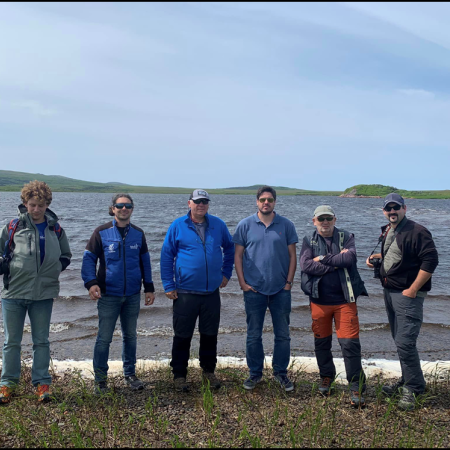
Thanks to the BEST project, we have been able to involve more and more people to help us better manage brook trout sport fishing and, more generally, improve knowledge and protection of the archipelago's hydrosystems. In particular, we were able to organize a one-week trip with five colleagues in July 2022, thanks to additional funding from the SPM research platform (https://www.facebook.com/piiress.spm) and a new project from the Office Français de la Biodiversité to continue the work initiated in BEST (reopening the archipelago's largest pond to the sea, étang MIRANDE). These five colleagues (see photo) are, from left to right, specialists in brook trout aquaponics (Jean-Baptiste LEGRAND, Guillaume BEUCHER; Echologia/Aquaponia), hydrosystem management and sport fishing (Olivier BRIARD, Nivelle-Côte Basque fishing association), fish biology (Fabrice TELETCHEA, Université de Lorraine, scientific leader of the project), sport fishing (Bertrand JACQUEMIN, world champion, Vertige Fly Fishing), and environmental studies and fish monitoring (Fabien CHARRIER, head of the FISH PASS consultancy).
For these five colleagues, it was their first visit to the archipelago! We had an extraordinary week, with glorious weather every day, lots of encounters and fishing, and all in good spirits! Following their visit to the archipelago, these colleagues, who didn't know each other before coming, have all decided to continue accompanying us, on the one hand to learn more about and manage the ecosystems, and on the other to develop a sustainable eco-tourism activity in the years to come, with strong interaction with the locals.

